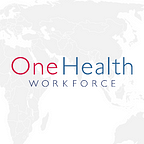National One Health Workforce Needs
Workforce dashboards allow faculty, government and university networks to train a pandemic ready workforce
National and international partners are working to develop training that meets the challenges of the future. Although international standards and approaches have given us direction, it is difficult to use these to create a full picture of workforce training needs.
Over the past year, the OHW project has been working with University Network partners in Africa and Asia to identify the most pressing workforce needs. In Southeast Asia, the SEAOHUN network has conducted various nationally focused needs assessments to articulate One Health needs. The processes have spanned from in-depth workforce analysis reports in Malaysia, to academic and government partnerships that identified national One Health Core Competencies in Thailand. Many countries have worked to engage government as a way of ensuring that universities are responsive to government needs.
In Africa, collaborative teams comprised of faculty, government professionals and intergovernmental partners have worked tirelessly to examine existing assessments and create a picture of national workforce needs. One Health teams came together for week-long workshops, and using the One Health Systems Mapping and Analysis Resource Toolkit (OH-SMART™) they examined their current multi-sectoral and multi-disciplinary operations. Stakeholders asked what workforce needs were necessary to effectively reach across boundaries during outbreaks, and each country summarized the results into tangible action plans and next steps. These final reports were validated through high-level government workshops.
Introducing the OHW Workforce Dashboards
During in-depth workforce planning efforts, it was found that national workforce assessments are rarely accessible, making it difficult for multi-national partners to collaborate around important training needs. In response to this, the OHW project has worked with over 80 partners to publish country-level workforce dashboards. These dashboards are continually being updated and modified to reflect the most pressing workforce needs in our partner countries. With visual representation of JEE scores, links to national assessments, including OH-SMART™ and OHW workforce planning reports, it is our hope that these dashboards support collaborative work and serve as a platform for workforce development.
View the Workforce Planning Strategy Report: http://z.umn.edu/OneHealthDashboards
We Believe the Future is Young
Historically, health training has been discipline specific with little engagement or training across disciplines. This creates disciplinary silos that inhibit effective collaboration. As students begin their early careers, siloed thinking becomes a mind-set that often persists into advanced professional leadership roles. As with many things in life, professional mindsets are shaped by early experiences and exposures to other ways of thinking. Although the OHW project is supporting the training of students, professionals and faculty alike, we believe that the future is young, and our greatest opportunity to prevent disease is in the mind and actions of those students that will follow in our footsteps.
Training Students, Faculty and Professionals with the Mindset and Skill Set to Prevent Disease
When looking ahead to the next generation, we need to help them develop the mindset and skill set to work collaboratively to prevent infectious disease. This is established through strong, evidence-based technical training, and the incorporation of One Health competencies into discipline specific training. However, classroom-based training is only one aspect of training, and students need robust, foundational field experiences to support a collaborative skill set. These students will have a mindset where reaching across boundaries is their first reaction and not their last.
Working Together to Train the Future Workforce
As with infectious disease response, workforce training does not happen in a silo. We want to create tools to support the mindset and skill set necessary for the One Health workforce. We’d love to work with you to assess workforce needs, design training and evaluate our collective efforts.
Meet the One Health Workforce Planning Team
Kaylee Myhre Errecaborde, DVM (PhD Policy Candidate) is leading the workforce planning and assessment strategy for the USAID One Health Workforce project. She is a faculty member at the University of Minnesota’s College of Veterinary Medicine. Her work focuses on enhancing policy and program implementation to support health workforce development. Follow her on Twitter @KayleeMyhreErre or connect with her on LinkedIn.
Katelyn Wuebbolt Macy, DVM, MPH is assisting to advance workforce planning efforts in Southeast Asia and Africa for the USAID One Health Workforce project. She is a researcher at the University of Minnesota’s College of Veterinary Medicine, and her work focuses on public health, education, and encouraging collaboration around health workforce development. Follow her on Twitter @katelynwmacy or connect with her on LinkedIn.
